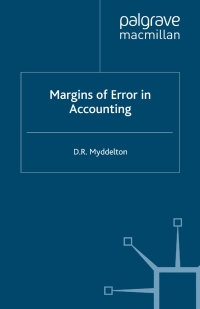Question
Allocating Joint Costs Using the Physical Units Method Orchard Fresh, Inc., purchases apples from local orchards and sorts them into four categories. Grade A are
Allocating Joint Costs Using the Physical Units Method
Orchard Fresh, Inc., purchases apples from local orchards and sorts them into four categories. Grade A are large blemish-free apples that can be sold to gourmet fruit sellers. Grade B apples are smaller and may be slightly out of proportion. These are packed in boxes and sold to grocery stores. Apples for slices are even smaller than Grade B apples and have blemishes. Apples for applesauce are of lower grade than apples for slices, yet still suitable for canning. Information on a recent purchase of 20,000 pounds of apples is as follows:
| Grades | Pounds |
| Grade A | 1,600 |
| Grade B | 5,000 |
| Slices | 8,000 |
| Applesauce | 5,400 |
| Total | 20,000 |
Total joint cost is $18,000.
Required:
1. Allocate the joint cost to the four grades of apples using the physical units method.
| Joint Cost | |
| Grades | Allocation |
| Grade A | $fill in the blank 1 |
| Grade B | fill in the blank 2 |
| Slices | fill in the blank 3 |
| Applesauce | fill in the blank 4 |
| Total | $fill in the blank 5 |
2. Allocate the joint cost to the four grades of apples by finding the average joint cost per pound and multiplying it by the number of pounds in the grade. Round the average cost answer to the nearest cent.
Average cost = $fill in the blank 6 per pound.
| Joint Cost | ||
| Grades | Allocation | |
| Grade A | $fill in the blank 7 | |
| Grade B | $fill in the blank 8 | |
| Slices | $fill in the blank 9 | |
| Applesauce | $fill in the blank 10 |
3. What if there were 2,000 pounds of Grade A apples and 4,600 pounds of Grade B? How would that affect the allocation of cost to these two grades? How would it affect the allocation of cost to the remaining common grades?
| Joint Cost | |
| Grades | Allocation |
| Grade A | $fill in the blank 11 |
| Grade B | $fill in the blank 12 |
| Slices | $fill in the blank 13 |
| Applesauce | $fill in the blank 14 |
Feedback
1. Joint production processes result in the output of two or more products that are produced simultaneously, have relatively significant sales value, and the costs must be allocated to the individual products for purposes of financial reporting. See Cornerstone 7.7.
2. Under the physical units method, joint costs are distributed to products on the basis of some physical measure such as pounds, tons, or gallons. The joint cost must be allocated to the various grades in order to cost product and value inventory. The physical units method allocates the cost in proportion to the number of units and is useful when the value of one product is close to the value of another product (grade).
3. See Cornerstone 7.7.
Step by Step Solution
There are 3 Steps involved in it
Step: 1

Get Instant Access to Expert-Tailored Solutions
See step-by-step solutions with expert insights and AI powered tools for academic success
Step: 2

Step: 3

Ace Your Homework with AI
Get the answers you need in no time with our AI-driven, step-by-step assistance
Get Started


